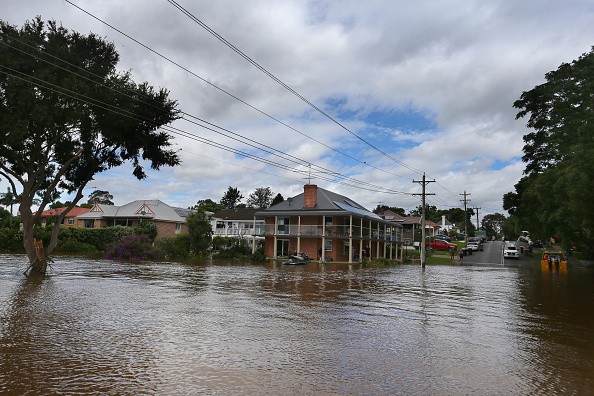Flash floods have been issued for Australia's east coast, and tens of thousands of Sydney citizens have abandoned their residences overnight as monsoon downpours hit a broad area of the country once again.
Rainfall and storms are expected to return to eastern Australia, particularly flood-affected portions of northern New South Wales and south-east Queensland, bringing an end to the month-long dry period experienced by many places.
Torrential rain strikes Australia last three weeks ago

Australia's eastern rivers were already near capacity following record downpours in numerous regions of Queensland and New South Wales states in recent weeks, which shut off towns and swept away farms, cattle, and highways, as per TRT World.
Since the deluge began, nineteen individuals have been murdered, the majority of them were killed in flooded houses or in automobiles attempting to cross flooded highways.
Torrential downpours pelted Sydney overnight, with some suburban areas obtaining up to 200 mm since Monday morning, exceeding March's average rainfall of about 140 mm, causing flash flooding and triggering emergency evacuation orders in the city's southwest.
Emergency responders anticipate that 70,000-80,000 individuals in Greater Sydney are subject to mandatory evacuations, however they do not expect everyone to comply.
It's the watery equivalent of the 'Black Summer' bushfires, according to emergency services spokesperson Phil Campbell, according to the AFP news agency.
The severe storm came back to Australia
Last month's extensive rains, which were fed by an atmospheric river of wet tropical air, dropped torrential rain on places like Lismore for many days, as per The Guardian.
This time, however, precipitation from Wednesday onwards is expected to be "entirely storm-related," according to Jordan Notara, a senior Bureau of Meteorology weatherman.
On Wednesday morning, an anterior structure will move thru the Sydney, bank all around the Blue Mountains, and shape a line of storms up through into the Hunter Valley and the mid-north shoreline, he said.
Thursday's inclement weather will transition much farther north, with the northern tablelands, rather than Lismore, quite likely to obtain a downpour.
"There's still a lot of moisture flowing through," he remarked.
"There is clearly a chance that in remote sections of the state, you may receive a lot of rain in a tiny pocket on any of the days during the next seven days."
As of Tuesday afternoon, the bureau predicted up to 15mm of rain in Lismore on Thursday, up to 30mm on Friday, and days of showers lasting into next week.
Falls in Sydney could reach 10mm on Wednesday morning before increasing to 20mm and 25mm on Thursday and Friday.
Inland locations, such as Penrith and Richmond, which were flooded earlier today, might receive up to 35mm on Friday, the wettest day in the projected period.
To this time in 1956, the city has received little over 1 metre of rain. Depending on how wet the next five days are, he believes this year will reclaim the top spot.
The European model, for example, predicts 100mm of rain by Sunday, while other models predict less.
© 2026 NatureWorldNews.com All rights reserved. Do not reproduce without permission.





